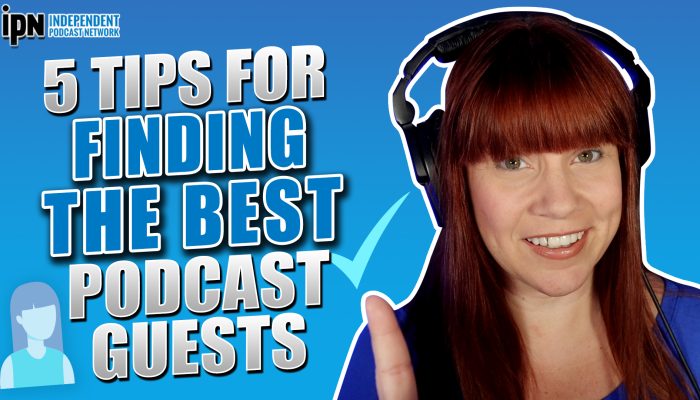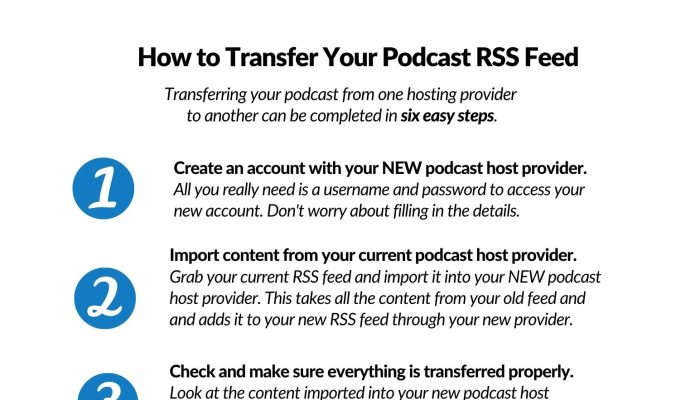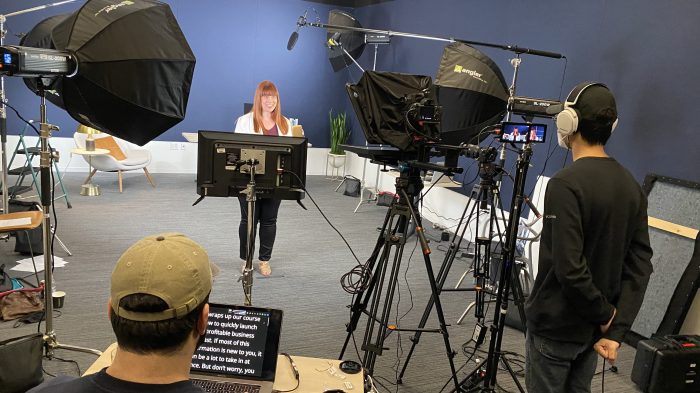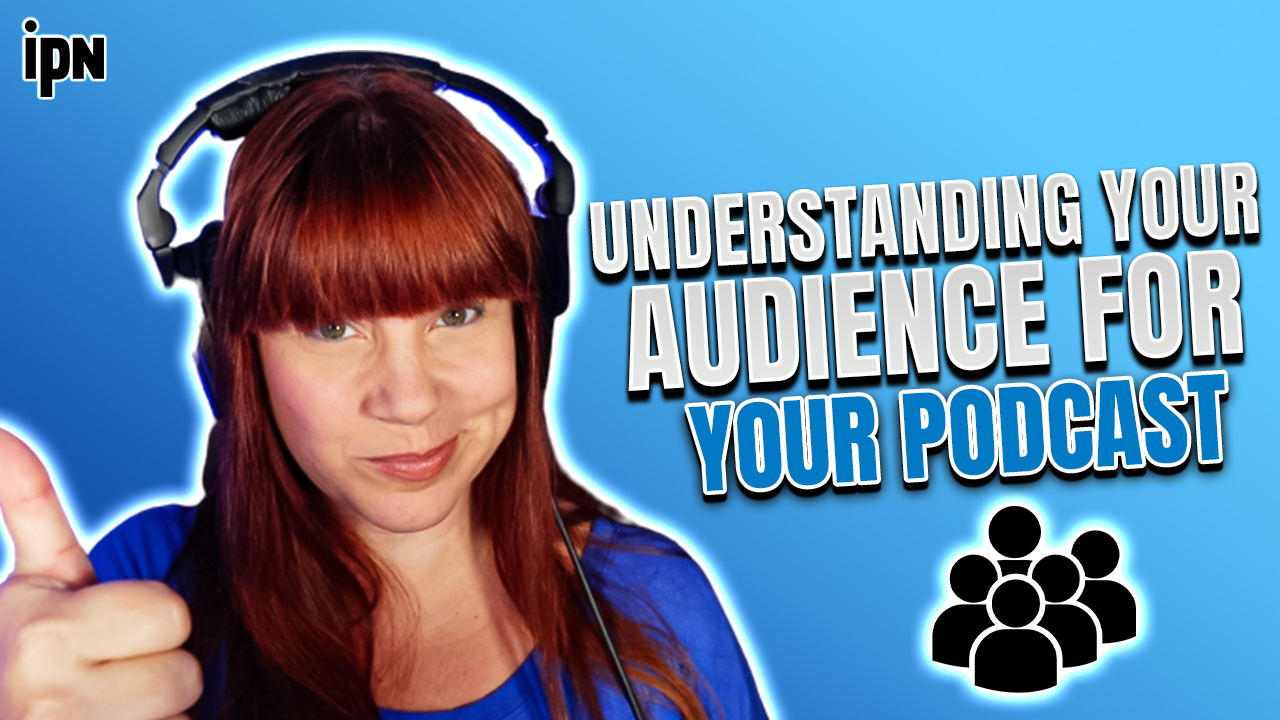
what is a podcast avatar?
We create episodes and we release them to the world- but who are you actually talking to? You’d be amazed at how many podcasters really haven’t thought about it this question. Not only do you want listeners, but you want the right listeners. And that starts with you- because you’re creating the content. On today’s episode, we’ve got some great tips on how to make sure you’re reaching the right audience.
Here’s what you’ll learn in this episode…
- What exactly is a podcast avatar and why is it important?
- What basic information do you need to know about your avatar?
- How do you use your avatar when you’re planning and producing your show?
Who Are you really talking to?
It’s time to get creative and define exactly who you’re trying to attract in each episode. This will help make your episodes more conversational.

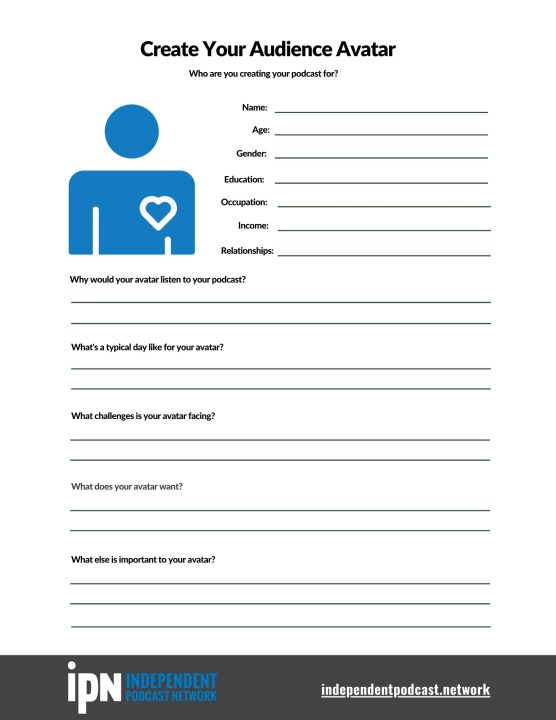
Episode Transcript
0:00
We create episodes and we release them to the world. But who are you actually talking to? You’d be amazed at how many podcasters really haven’t thought about this question. Not only do you want listeners, but you really want the right listeners. And that starts with you, because you’re creating the content. On today’s episode, we’ve got some great tips on how to make sure you’re reaching the right audience. Take it away, radio man. Podcast Your Business.
Hello, everybody. Welcome back to Podcast Your Business. I took a little bit of a break. I don’t know if you guys noticed, but I’m back after the new year. Of course, I’m Sunny Gault. I’m a podcast coach and mentor. I’ve been podcasting for 17 years. I’m also the founder and CEO of Independent Podcast Network. And I am here to help you create amazing podcasts specifically for your business. And we do this by mastering the Five P’s of podcasting. That’s right, the Five P’s of podcasting, this is what I talked about in the very first course I ever launched. And by the way, this podcasting course that I’m telling you about is now available for free on the Independent Podcast Network website. So I sold it for a bunch of years, whatever. And I’ve now made it free to everyone. We’re releasing a new video every week. And then once the content is on the site, you guys will have access to it for as long as you want. You don’t have to pay me a dime. This is my gift to you guys. And in that course, I talk about the five P’s of podcasting prep, clan, produce, promote, and profit. When we talk about prep-we’re talking about should you even start a podcast? Is this a good idea? Plan? What is the look and feel for your podcast? Produce? How do you create amazing content promote? How do you tell everyone about it? And then finally, profit! Obviously, we want to make some money with our show. Mr. radio man, what are we talking about today?
Plan. Yep, we are planning for our podcast. Now there’s a lot of things to consider when you start planning for your show. But most decisions will be based on what we’re talking about today. And that is your podcast audience. Who do you want to listen to your podcast? Now? That is a completely different question than who is actually listening to your podcast. You’ll get those stats later on. We’re not going to really talk about that today. And by the way, you can’t always control who actually listens to your show. But having a clear understanding of who you intend to listen to your show will have a huge impact on everything you do for your podcast, such as the topics you select the music you use, even how often you release your episodes. So in today’s episode, we are going to talk about three main things we are going to explain what an audience avatar is, right? You may have heard that word before we’ll talk about that. We’re gonna review some basic information. You’ll want to know about your avatar different questions to think of. And finally, we’ll talk about how you can use your avatar when creating your episodes. We will be right back after this quick break. Okay, welcome back, everyone. Now when I say the word, Avatar, what comes to mind? I don’t know, perhaps a popular movies story, some blue people from Pandora? I don’t know. It was it was pretty popular. James Cameron did a really good job with that. And I think there’s a sequel coming out now. Okay, I digress. Yes, that is avatar. All right. You may also be familiar with the term avatar, if you game online, right. Or if you create some sort of profile online, the image of you is sometimes called an avatar. But let me give you the actual definition. I actually Googled this, look this up online. And this is what I found. An avatar is an electric image that represents a user. Pretty simple right? Now, in this case, for podcasting purposes, the electronic user is someone who listens to your podcast, it’s not the actual person, right? That’s a little creepy. It just resembles the type of person you’re planning to reach out to through your podcast. It allows you to have a visual of who you’re actually talking to. Because it’s never a good idea to picture a room full of people you don’t know. That’s a very personal and people listen to podcasts because they want something different than what they’re getting from mainstream media. You have to really be able to connect with the person feel like you’re talking directly to them. And the best way to do that is actually talk right to them because you know who you’re talking to. And here’s the thing you have control over who this person is because you’re going to form your show around the things that would attract this type of person. For example, your show format, you have to figure out who your avatar is first, and then you create your show format around the avatar. What would they like? What wouldn’t they like? The topics you select from your podcast are going to be based on what your avatar likes, and doesn’t like or what’s important to them. And the same thing when you’re a little bit further down the road. And you start working with advertisers or maybe other types of partnerships, maybe you’re not doing advertising, but you’re partnering with other people for different things, it will determine the type of partners you have. Because again, this needs to all fit together. It’s like a giant puzzle. And you’re piecing it all together to fit this person. I also want to say that you can have multiple avatars for your podcast. So as I’m talking about this, and you’re thinking, oh my gosh, well, there’s this type of person I reach out to and this type of person, okay, you don’t want to be super scatterbrained, you still need to reel it in. But if you find yourself saying I need more than one avatar, that’s okay. You can still use everything that I’m talking about in today’s podcast, and you’re just going to duplicate it. That’s it.
So who is your avatar? In general? How do you start to bring this whole thing together this whole puzzle piece together? Well, maybe your avatar is someone just like you. I mean, that’s the way it was with me. When I created my parenting shows. I’ve talked about this in previous episodes. But I created these podcasts, because that’s what I needed in life at the time to get me through that stage of life. I wasn’t getting out of the house very much. I had a ton of questions about pregnancy and newborns, and how do I parent my child. And so I use those podcasts, to reach out to experts and also to communicate with like minded parents. I mean, honestly, it was part therapy. For me, it was a much, much cheaper form of therapy than therapy actually would have been. But I knew who my avatar was, because the Avatar was me, it was someone going through exactly what I was going through. So maybe that is your podcast, which makes it really easy, right? Because you just kind of think about the things that you would like, and then you write it out and you talk to someone just like you, maybe it’s someone you used to be. So for those of you, the first thing that came to mind is someone that is struggling with some sort of addiction, right? Because a lot of times when you come out of that darkness, so to speak, you’re able to look back and you want to help people that are going through some sort of struggle, maybe it is someone struggling with divorce, or the loss of a child or whatever it may be, it could be someone that used to be you, and then it’s just based on that experience you have in the past, because you can reflect back and think about who that person is, because you already went through it, right. And there may be some of you that are listening to this and you’re building this off of a business that you work for. In that case, the avatar may not be you may not be anything you’ve ever gone through before, if this is just something that is tied to the business that you work for, in that case, I would say learn the basic demographics for the ideal client that your business is trying to reach out to. And then you’re going to use those demographics. Now I want to preface this by saying there is a big difference between demographics and creating an avatar. The demographics is raw data and information you can use to build your avatar. Because what we’re doing today, we are creating a process, we’re basically creating a virtual person. And this is similar to what actors do when they’re preparing for a new role. They are creating something new, it’s not them, right, they’re given a script. And they make a story behind this person. They give it a backstory, you’ve heard that term a backstory. So they would know how this character would react in certain situations. That’s essentially what you’re doing here, you’re just not going on stage or, you know, in front of a movie camera and presenting it. But all of this is still going on in your head, you’re creating a backstory for who this person is, so you know how to best communicate with them.
And I have something that’s going to help you through this whole process. So I’ve created a very basic guide on how to create your audience avatar, and it’s a handout. I’ll include the link in the description below. It’s absolutely free. And it just asked some basic questions to get the wheels turning about what your avatar may be like. Now, I encourage you guys to just use this as a base, there’s probably more detailed information you want to get into every podcast is a little bit different. And the things you talk about on your show is different. So you’re probably going to add more questions than what I have on the sheet. But it will, you know, at least get you thinking about stuff. Okay, so let’s go ahead and go over this handout. I’m going to pretend you guys have it right in front of you. So maybe you want to pause this Hot gas, download it, and then take a look at it. So if you’re looking at this handout here, first of all, we’ve got some basic information, I encourage you guys to name your avatar. I know that sounds a little strange. But when you name it, it’s like, it’s like when your kids bring home a pet, and you’re like, No, no, no, don’t name it, then it becomes real. It’s kind of the same thing. But I want you to name your avatar, you can have fun with this. Or maybe it’s just James or Polly, or Jennifer or whatever you want. But give your avatar name. Also give this person an age, not an age range. Okay, this is not demographics, guys, this is an actual person that you can think about, as you’re creating these podcast episodes. Give them a gender. Talk a little bit about their education. You know, do they have a high school diploma? Did they go to graduate school? Did they have some other specialized education? So they be about to understand things at a higher level? Maybe? What is their current occupation? What is their income level? What kind of relationships do they have? Are they married? Do they have children? Are they single? Are they gay? Are they transsexual, whatever it might be? assign that to your avatar.
Okay, and then we have some I would I would qualify these questions as something you may need to think about a little bit more. First question here. Why would your avatar listen to your podcast? This is a very important question. Because there may be other shows out there. And honestly, last time I checked, there was like, I don’t know the statistics are all over the map, somewhere between 2 million and 4 million podcasts out there, depending on which source you want to reference. Okay. The point is, there’s a ton of podcasts, inevitably, there’s probably something out there that is similar to whatever podcast you’re going to create, that’s fine. Because you’re gonna put your own spin on it, you’re gonna have your own avatar, and it’s gonna be uniquely yours. So don’t worry about that. But you do have to think about what are you bringing to the table here? Why would your avatar and maybe you do want to save this question until the end? But why would your avatar want to listen to this show? What are you putting in this show that makes it interesting for this persona that you’re creating? So that’s the first question. Next, what is a typical day like for your avatar? So this is what I’m talking about. When I talk about, you know, you’re creating a virtual person, you’re almost creating a role for this, you know, do they sleep in in the morning? I mean, I know this sounds a little crazy. But the deeper you go with this, the more questions you will answer. And the easier it will be to create content for this person moving forward. So have fun with it, maybe your person likes to sleep in, maybe they hit the snooze button 10,000 times, before they actually decide to get out of bed. Maybe they have a dog that wakes them up and licks their feet. And the first thing they do in the morning is take their dog out to go to the bathroom. That would probably be my avatar that’s closely related to my life right now. Okay, so think about what the typical day is like for your avatar.
Next, what challenges is your avatar facing? Because the challenges that we have in life, they motivate us, they steer our lives in different directions, right? So think about what’s challenging to them, because that’s probably going to be at the forefront of their minds, when they’re listening to your podcast. Are they also consumed with something else? You know, do they? You know, are they interested in the stock market or something like that? Are they worried about stocks nowadays? Or are they worried about their child’s education? What what’s going on in their life? What are some of their challenges, maybe their physical challenges? You know, maybe they have some sort of a disability or something like that. But think about what what is really facing them on a day to day level that they are challenged with. Next, what does your avatar want? When they wake up in the morning? What are they what do they think about? Right? What are their goals in life? Do they want to make a bunch of money? Do they want to have 10,000 kids? That’s a lot. probably cut it off before then, you know, is their career super important to them? Do they want to be able to take vacations every year? And travel and work for charity? Right? What what is it that really motivates them? And finally, what else is important to your avatar? So this is kind of the catch. All right, and you guys can really think about this, and probably add a bunch more questions, because like I said, every podcast is a little bit different. So you may want to do more of a deep dive. But what else is important to this avatar? And then what I want you to do once you’ve written all this down on this handout, because I was the last question, feel free to save it, print it out. Whatever works for you. Maybe it works to print it out. Have it next year computer when you’re recording your podcasts, you’re like, oh, there’s Jennifer, I’m going to pretend like I’m talking directly to Jennifer. Because that is going to make the conversation sound much more natural. Because we relate to humans. So it is so unnatural for us to just talk into a microphone like even now, as I’m talking to you guys. I’m picturing one of you. It’s an intimate conversation. I’m not picturing a room full of people. Regardless of how many people listen to this episode, I will always be talking to one person. And if you decide to have more than one avatar, my recommendation is divided up episode by episode. Okay, so maybe this episode, you’re focused on this type of person, and they shouldn’t be completely separate guys. If you find that your avatars are way different than one another, then you may want to reel in exactly who your podcast is for. But it may help to have a female version and a male version or you know, whatever works for you. But when you are thinking about your episodes, just think about one avatar at a time. Okay, see you on the other side of this quick break.
Thanks so much for checking out this episode, you guys the handout the link to it, it is on our website, Independent Podcast Network, but the direct link will be in the description below. Download the handout, have fun with this you are well on your way to creating an awesome avatar for your show. And like I said, everything is based off that you’re going to make a ton of decisions with your podcast. It all starts with your avatar. On our website. We just did a huge redesign you guys and I put all of the resources everything I have on YouTube and stuffed away in folders and stuff. I have put all of this content on our website. We have free resources including blog posts, podcasts, episodes, videos, handouts, and if you’re brand new to podcasting, we even have that free how to podcasting course that’s also on our YouTube channel as well. Until next week, remember….podcasts are awesome!



